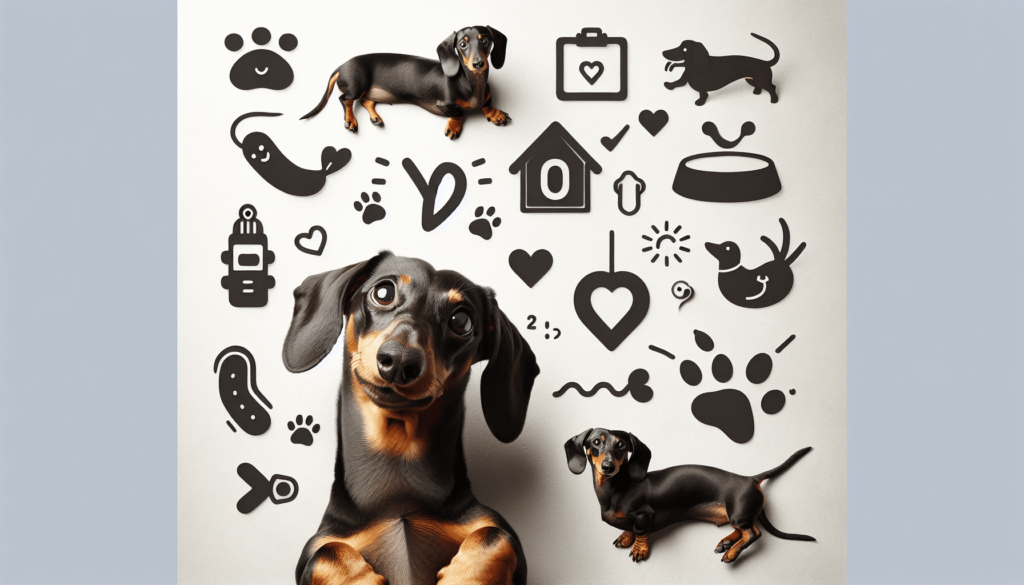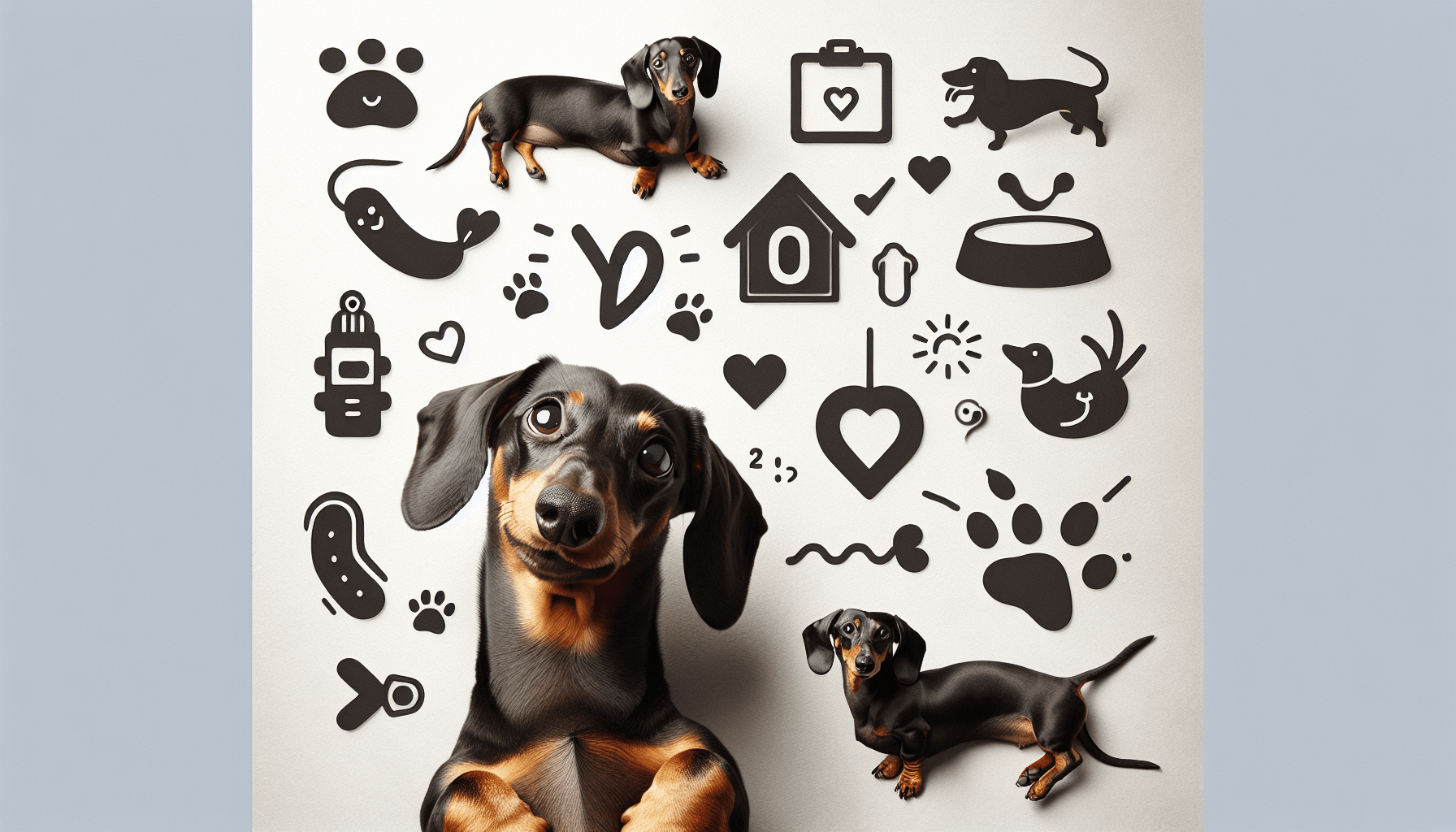If you’ve ever wondered whether Dachshunds are the cuddly type, you’re in for a treat. In this article, we’ll explore the question “Do Dachshunds Like To Cuddle?” Known for their long bodies and playful personalities, Dachshunds have captured the hearts of dog lovers worldwide. But when it comes to cuddling up on the couch or snuggling in bed, do these adorable pups enjoy a good cuddle session? Let’s find out!
Physical Characteristics of Dachshunds
Body Type and Size
Dachshunds are unique in their body structure, characterized by their long torso and short legs. They have a compact and muscular build, which allows them to maneuver through small spaces and burrows. Despite their relatively small size, dachshunds are known for their surprising strength and agility.
Coat Length and Texture
Dachshunds come in various coat lengths, including smooth, longhaired, and wirehaired. Smooth-coated dachshunds have a shiny and sleek coat that lies close to their body. Longhaired dachshunds, on the other hand, have a luxurious and flowing coat, while wirehaired dachshunds have a more rough and bristly coat. Each coat type requires different grooming needs and provides a distinct aesthetic appeal.
Color Patterns
Dachshunds exhibit a wide range of color patterns, including solid colors like red, black, and chocolate, as well as dappled, brindle, and piebald patterns. Their distinctive patterns add to their visual appeal and make each dachshund unique. Whether you prefer a classic solid-colored dachshund or an eye-catching dappled variation, there is a color pattern to suit everyone’s taste.
Personality Traits of Dachshunds
Loyal and Protective Nature
Dachshunds are incredibly loyal companions and form strong bonds with their owners. They are known for their protective nature and will go to great lengths to keep their loved ones safe. Despite their small size, dachshunds have a courageous spirit and will fearlessly protect their family, making them excellent watchdogs.
Independent and Stubborn Attitude
While dachshunds may be loving and loyal, they also possess an independent and stubborn streak. This can make training a dachshund a bit challenging at times, as they have a strong will and a mind of their own. However, with consistent training and positive reinforcement, dachshunds can learn to be obedient and well-behaved companions.
Curious and Alert
Dachshunds have a natural curiosity and a keen sense of alertness. They are always on the lookout for new sights, sounds, and smells in their environment. This curiosity, combined with their alert nature, makes them excellent watchdogs and companions for those seeking a vigilant and attentive dog.

Dachshunds’ Affectionate Side
Bonding with Their Owners
Dachshunds are known for their intense bonds with their owners. They thrive on human companionship and enjoy being a part of their family’s everyday activities. Dachshunds often choose a favorite person in the family and will shower them with affection and loyalty. Their unwavering devotion makes them cherished pets.
Enjoying Physical Contact
Dachshunds are generally very affectionate dogs who enjoy physical contact with their owners. They often seek out opportunities to cuddle and snuggle, whether it’s on the couch, in bed, or simply resting on their owner’s lap. The warmth and closeness of physical contact provide them with a sense of comfort and security.
Desire for Close Proximity
Dachshunds have a strong desire to be in close proximity to their owners. They are often referred to as “velcro dogs” because they have a tendency to stick by their human’s side. Whether you’re cooking in the kitchen, working at your desk, or watching TV, your dachshund will likely be right there, enjoying your company and seeking attention.
Factors Affecting Dachshunds’ Cuddliness
Individual Temperament
Each dachshund has its own unique temperament, which can influence their cuddliness. Some dachshunds may naturally be more affectionate and cuddly, while others may be more independent and less inclined to engage in cuddling behavior. It’s essential to understand and respect your dachshund’s individual temperament and not force cuddling if they are not comfortable with it.
Upbringing and Socialization
The way a dachshund is raised and socialized from a young age can impact their behavior, including their cuddliness. Proper socialization and positive experiences with physical contact during puppyhood can help foster a cuddly and affectionate nature in dachshunds. On the other hand, a lack of socialization or negative experiences can make some dachshunds more wary or resistant to cuddling.
Health and Comfort Issues
Dachshunds, particularly those with certain health conditions, may have a decreased desire for cuddling due to discomfort or pain. Dogs with back issues, which are common in the breed, may experience discomfort when being held or placed in certain positions. It’s crucial to be aware of any underlying health issues and provide appropriate care and comfort to ensure their well-being and comfort during cuddling.

Establishing a Cuddle Routine
Creating a Safe and Comfortable Environment
To encourage cuddling behavior, it’s essential to create a safe and comfortable environment for your dachshund. Provide a cozy bed or blanket where they can snuggle up, ensuring it’s in a quiet and secure area. Make sure the temperature is suitable, and there are no distractions or potential sources of discomfort.
Understanding Dachshunds’ Body Language
Dachshunds communicate their feelings through body language, including their posture, tail position, and facial expressions. It’s crucial to learn and understand your dachshund’s body language to gauge their comfort level during cuddling. Signs of relaxation and enjoyment include a relaxed body, wagging tail, and a soft expression, while signs of discomfort may include stiff body language, attempts to escape, or growling.
Providing Positive Reinforcement
Positive reinforcement is a powerful tool to encourage cuddling behavior in dachshunds. Offer praise, treats, and affectionate words whenever your dachshund engages in cuddling or displays affectionate behavior. By associating cuddling with positive rewards, you can reinforce the behavior and increase the likelihood of them seeking out cuddles in the future.
Other Forms of Dachshunds’ Affection
Playful Interactions
Dachshunds are playful and enjoy engaging in interactive activities with their owners. They appreciate games of fetch, puzzle toys, and other mentally stimulating activities. By participating in these interactive play sessions, you can strengthen your bond and show your dachshund affection in a way that matches their playful nature.
Displaying Protective Behavior
dachshunds have a natural instinct to protect those they love. They may display protective behavior by keeping a watchful eye on their family members, barking at potential threats, or even placing themselves between their owner and perceived danger. This protective behavior is a form of affection and loyalty, showing how deeply they care for their loved ones.
Showing Devotion and Loyalty
Dachshunds are incredibly devoted and loyal pets. They make it clear through their affectionate gestures and unwavering presence that their owners are their top priority. Whether it’s following you from room to room, eagerly greeting you at the door, or simply showering you with love and attention, dachshunds show their devotion and loyalty in countless ways.
Tips for Encouraging Cuddling Behavior
Building Trust and Bond
Building a strong bond and trust with your dachshund is vital for encouraging cuddling behavior. Spend quality time together, engage in activities they enjoy, and provide positive reinforcement for desired behaviors. By creating a foundation of trust and a deep bond, your dachshund will feel more comfortable and secure in engaging in cuddling.
Offering Rewards and Treats
Reward-based training is an effective method for encouraging desirable behavior, including cuddling. Offer small treats or verbal praise whenever your dachshund snuggles up or shows affection. Positive reinforcement creates positive associations with cuddling and reinforces the behavior, making it more likely to occur again in the future.
Being Patient and Persistent
Every dachshund is unique, and it may take time for some individuals to become comfortable with cuddling. Be patient and allow your dachshund to approach cuddling at their own pace. Respect their boundaries and never force them into physical contact. With consistency and persistence, your dachshund may gradually become more open to cuddling and enjoy it as a regular part of your relationship.
Possible Challenges and Solutions
Dachshunds with Fear or Anxiety
Some dachshunds may exhibit fear or anxiety that can hinder their ability or desire to cuddle. This can be due to past traumas or a naturally anxious disposition. Create a calm and stress-free environment, provide them with a safe space, and consider seeking professional help from a qualified veterinarian or animal behaviorist to address their anxiety issues and help them feel more comfortable with cuddling.
Handling Dachshunds’ Potential Aggression
Aggression can be an issue in any dog breed, including dachshunds. It’s essential to address any signs of aggression promptly and seek professional guidance to ensure everyone’s safety, including your dachshund’s. A professional dog trainer or behaviorist can help you understand the underlying reasons for aggression and develop a suitable training plan to manage and correct the behavior.
Working with Dachshunds’ Independent Nature
Dachshunds have an independent nature that can sometimes clash with their owners’ desire for cuddling. Respect your dachshund’s independence and allow them to have alone time when they need it. Find a balance between wanting affection and respecting their boundaries. Remember that forcing cuddles or invading their personal space can result in stress or reluctance to engage in cuddling behavior.
Cuddling Do’s and Don’ts
Understanding Dachshunds’ Physical Limitations
Dachshunds have long bodies and short legs, making them prone to back issues and spinal injuries. It’s essential to handle them gently and avoid putting unnecessary strain on their backs during cuddling. Opt for positions that provide support and avoid picking them up or placing them in uncomfortable positions that may cause discomfort or injury.
Respecting Their Personal Space
While dachshunds can be cuddly and affectionate, it’s essential to respect their need for personal space. Allow them to come to you for cuddles rather than constantly seeking physical contact. Respect their cues for wanting alone time and ensure they have a designated quiet space where they can retreat when needed.
Avoiding Rough Play During Cuddling
During cuddling sessions, it’s important to maintain a calm and gentle atmosphere. Avoid engaging in rough play or sudden movements that may startle or upset your dachshund. Cuddling should be a relaxing and soothing experience for both you and your dachshund, promoting a sense of comfort and security.
Conclusion
Dachshunds, with their unique physical characteristics and distinct personality traits, can be incredibly affectionate and cuddly companions. Understanding their individuality, providing a safe and comfortable environment, and building a bond based on trust and positive reinforcement are essential for encouraging cuddling behavior. By respecting their boundaries, being patient, and nurturing a loving relationship, you can enjoy the cuddly side of these wonderful dachshund companions.
